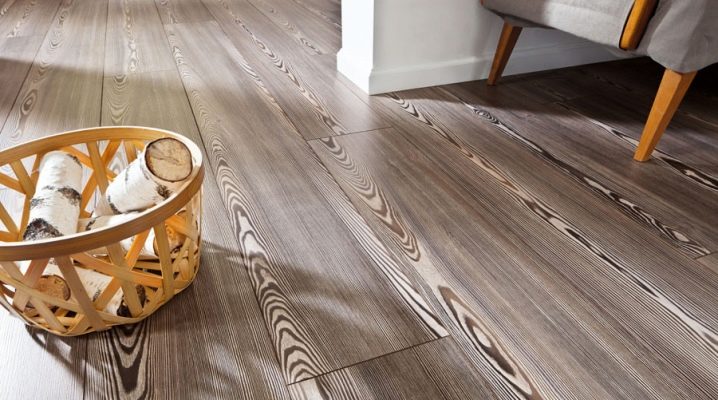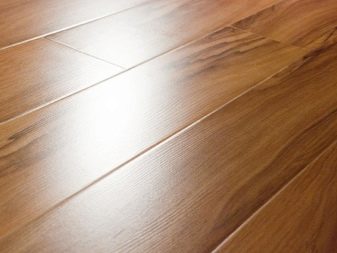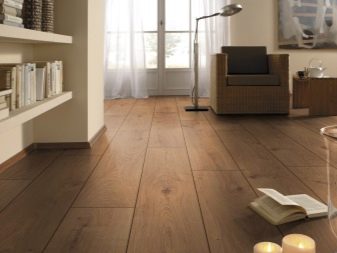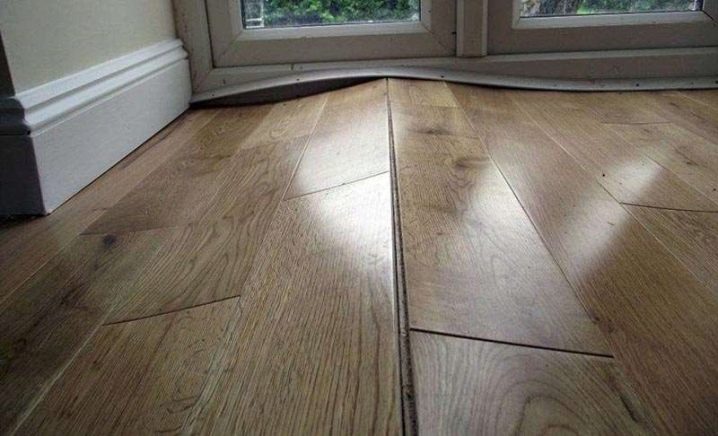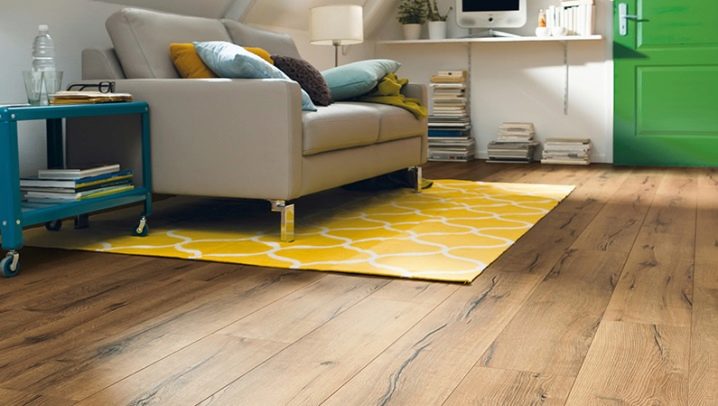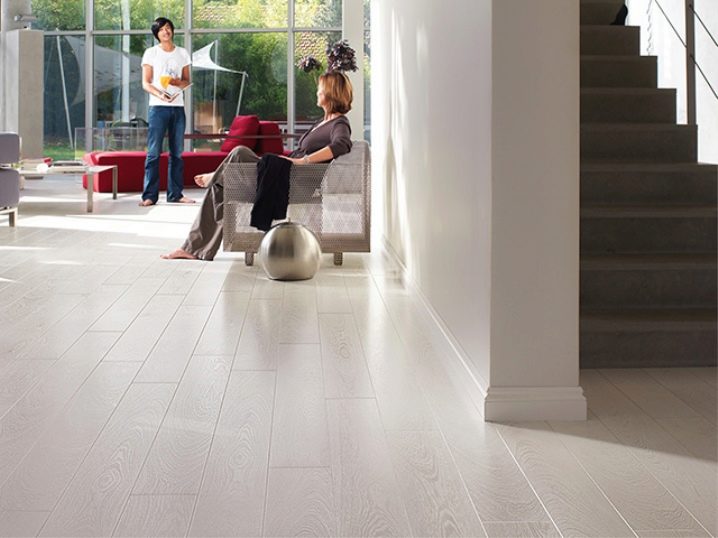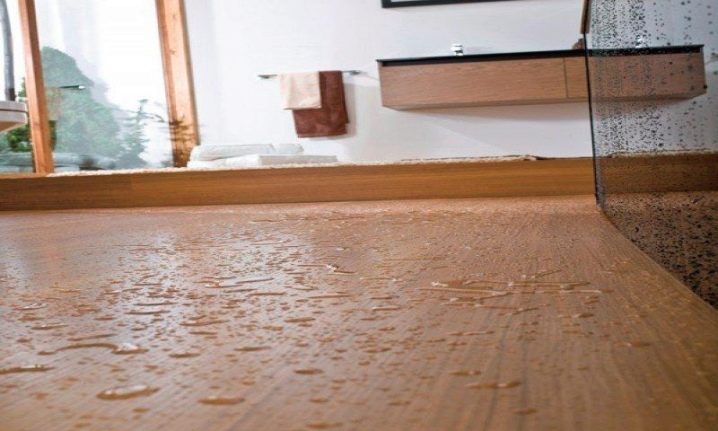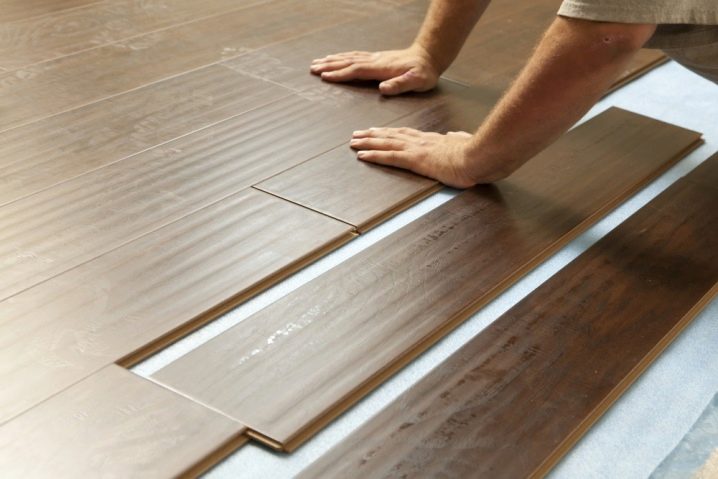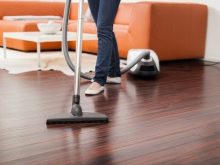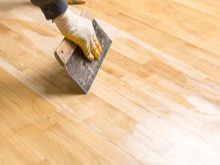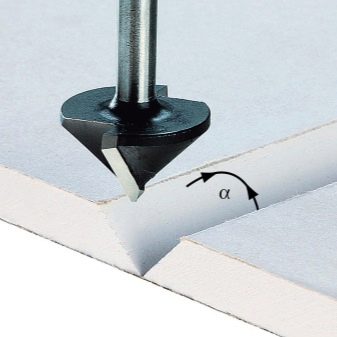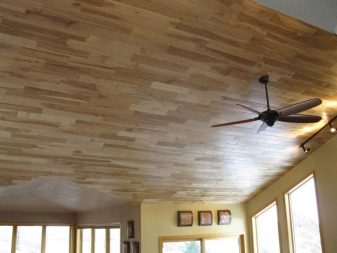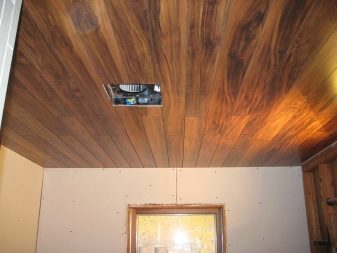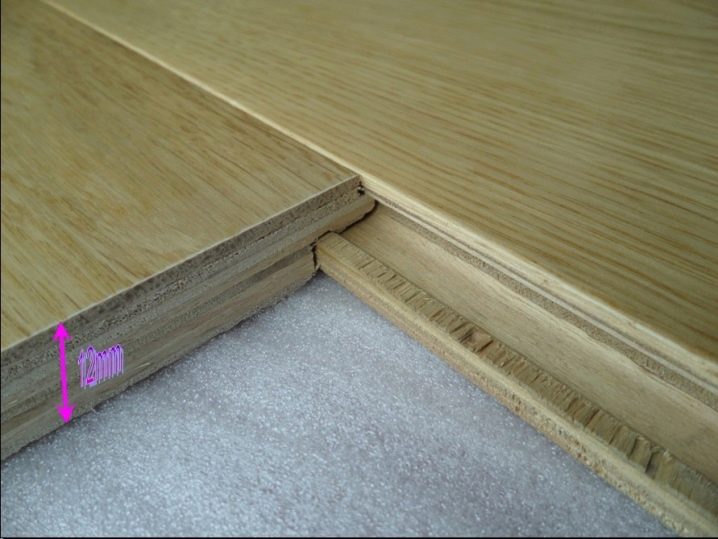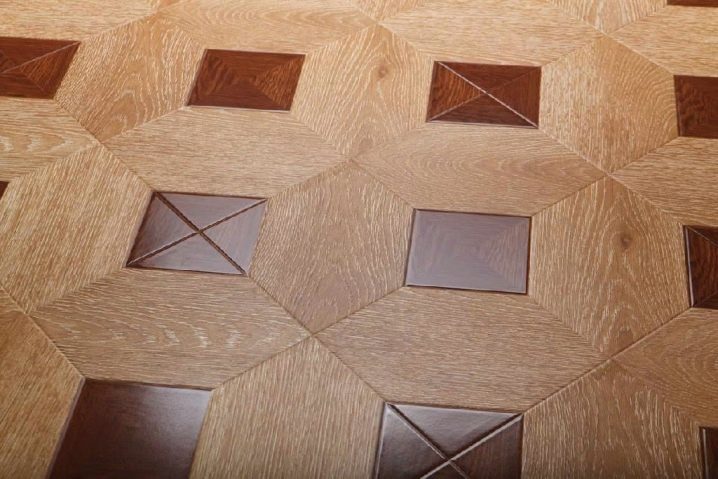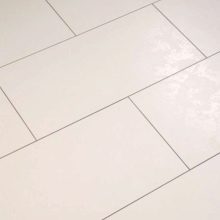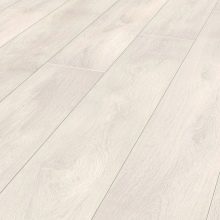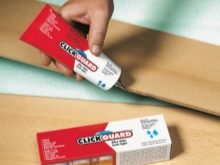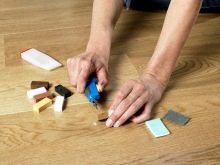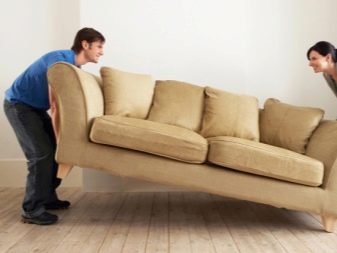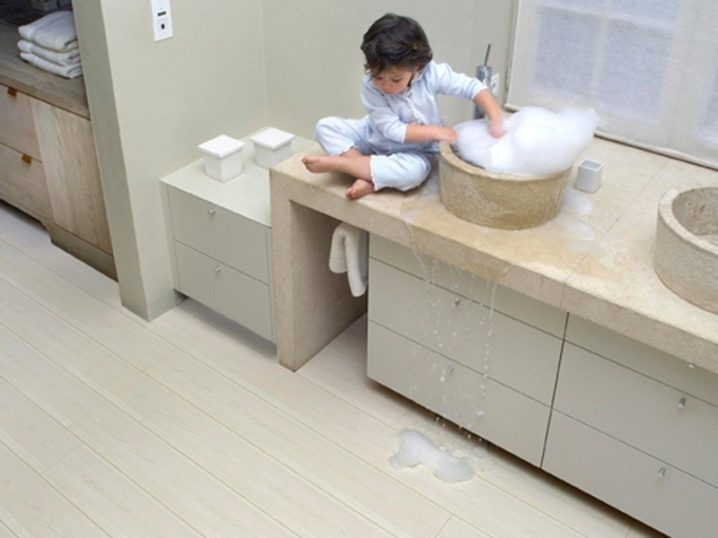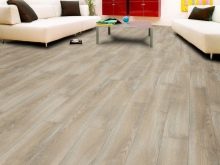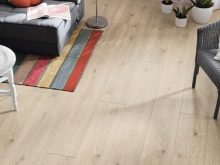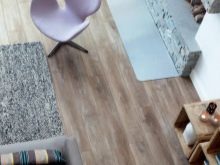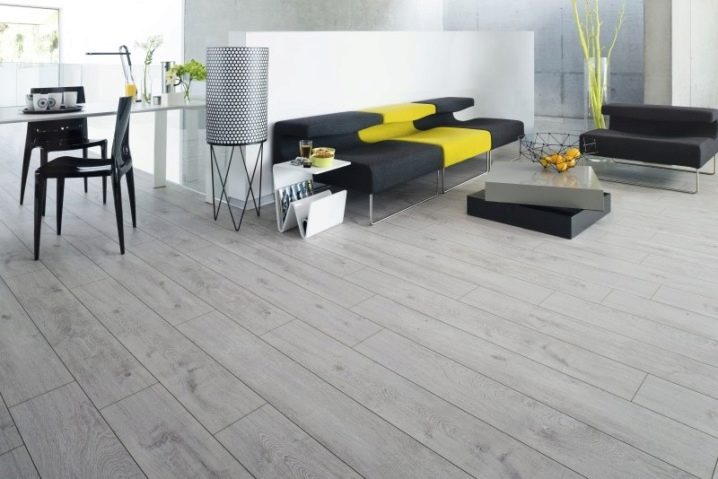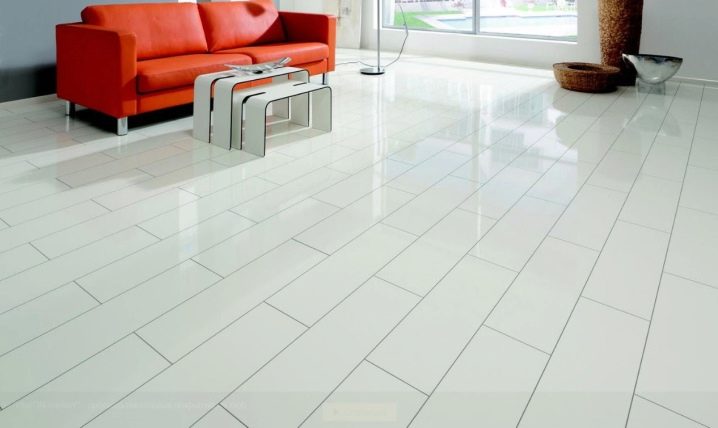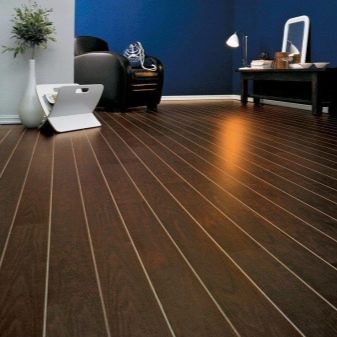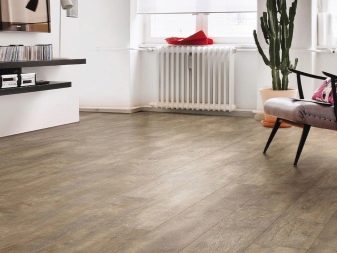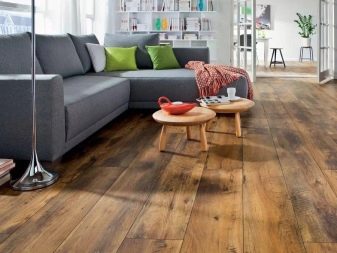Chamfer laminate: what is it and where is it used?
Laminate flooring is a unique floor covering that fits different types of interiors. Produce products from piece components with a small addition of wood. To give the lamellas naturalness, manufacturers complement its surface with various visual attributes. Particularly popular today is laminate with a chamfer.
What it is?
Laminate is a popular finishing products, characterized by an optimal ratio of price and quality. Therefore, today manufacturers constantly improve these products, making them visually and technically more qualitative and durable. One of the varieties of these products are lamellae, complemented by a facet. Technically This is the same classic laminate, the ends of which are slightly cut. The cut angle and its shape are determined only by specific technologies of the manufacturer.
Each such level, as in the classic version, is complemented by a locking system. Therefore the styling process no different from mounting other types of boards. When docked, the lamellae form small depressions at the ends.
A similar design was copied from the floor of the natural board, which expands under the influence of temperature. Therefore, in order to visually hide the cracks of the master complement the array with chamfers.
On the laminate, chamfers are used only for the purpose of imitating natural materials.
Advantages and disadvantages
Laminate with a chamfer appeared on the domestic market relatively recently, so many buyers still do not know whether such a surface serves well or poorly. But as practice shows, products of this type are no worse than classical lamels without chamfer. There are several significant advantages of laminate with a chamfer:
- Visually, the chamfer forms a small cavity, which very well hides the gaps between the lamellae. This is important because the laminate is also exposed to temperatures, expanding or contracting.
- Unique design. The surface is very similar to the flooring of natural wood, which allows it to be used to solve various design ideas.
- The strength of the board. The presence of chamfer does not make products less resistant to stress. The surface can be used both in living rooms and in offices with high traffic. This, in turn, also ensures the durability of the floor.
- To achieve strength, chamfer is additionally treated with special chemical solutions. They also do not allow moisture to be absorbed, which makes the slats moisture resistant.
But it should be understood that these characteristics depend on the manufacturer and technologies used by them.
- The technical parameters of the laminate can be laid on the base with small irregularities. In most cases, height differences should not exceed 3 mm.
But the laminate with a chamfer is not a universal coating, as it has several negative sides:
- The price of such products is slightly higher than the classic slats. Due to this production technology, which requires additional funds for the formation of chamfer.
- Dust and debris are often collected inside cavities.Therefore, when cleaning, you should carefully monitor each joint. If the laminate quality, then remove the debris from there using a conventional vacuum cleaner.
- Laying the boards in the bathroom should be accompanied by an additional treatment of the joints, since water can seep between them and destroy the substrate of the lamellae from the inside.
Kinds
Laminate with a chamfer is a subtype of classic lamellae, since it has the same technical and design features. But such products can be classified according to several basic features. One of the most important parameters is the chamfer type:
- V-groove. Get it by cutting the end at a slight angle. This parameter often depends only on the manufacturer. Cutting depth reaches 2-4 mm. Today, there are models of laminate with uneven V-shaped bevel. A similar approach is used by designers with artificial aging of the surface.
- U-shaped chamfer. The edges of such a slice have the shape of a smooth depression. This is achieved through the use of special tools.
- Microfacet. This variety has a small depth, which does not exceed 1 mm.A chamfer can only imitate the joints, but at the same time the dirt is not so well collected inside it.
There is a special laminate for the ceiling with a large bevel, which is not so easy to find. It is rarely used, since the installation of these materials is a rather complicated procedure. Single-sided laminate can be supplemented with cuts from several sides, that allows you to select these types of products:
- Double-sided slats. Often chamfer is present along the long sides. This slightly limits the way laminate is laid, since it is necessary to ensure that the light falls on the cuts.
- Board with a quadrilateral. Products with quadrilateral slices are more practical. A laminate of this type smoothes surface irregularities much better. The presence of chamfer from all sides allows you to mount the board in any direction.
The surface of the product is often painted under the texture of various wood species. Today there is a brushed laminate, which has a textured surface. It allows to imitate wood and to the touch. Depending on the protective coating, the chamfer itself can be divided into the following types:
- Painted cut.The surface of the chamfer is covered with special paints that do not allow moisture to penetrate inside. Their color is chosen for the style of the main surface. Products of this type are characterized by low durability, so their cost is relatively low. Famous manufacturers do not trim sections in a similar way.
- Laminated chamfer. After the formation of the slice, it is covered with a laminating film, which is similar in composition to the upper layer of the lamella. This type of chamfer is much stronger. It also repels liquid better, which prolongs the life of the product.
Dimensions
Laminate with a chamfer is almost no different from the classical models. The width of the board can vary widely. Narrow models reach a size of only 8-9 cm, while the optimum indicator is considered to be 18.5-19.5 cm, depending on the manufacturer.
Particular attention should be paid to thickness. The presence of a chamfer at the end significantly reduces this figure. Therefore, in order to achieve optimum strength, only slats with a thickness of 10-12 mm are equipped with a cut. On the market, you can find analogues for which this indicator is only 8 mm.
But such products are not durable and therefore it is possible to buy it only at your own peril and risk.
Colors
The design of the laminate with a bevel is not so wide, as this style fits more “under the natural board”. Therefore, manufacturers rarely produce boards "under the ceramic tiles."
It is considered to be universal products with a dark chamfer, which is aging the slats. Original also looks light laminate with a bevel. As for the flowers, There are many styles on the market, among which are:
- Completely white laminate, decorated with unique patterns or texture.
- Bleached Oak Perfect for modern interiors, filling them with purity and freshness.
- Ash. The texture of this tree is compared with the noble types of wood. Therefore, such a laminate is suitable for any classic style.
Styling options
The technology of installation of laminate with a facet is very simple, since the design assumes the presence of special locks. Laying slats of this type can only be 2 ways:
- In a straight line. All slats are parallel to one of the walls.Experts recommend to mount the board in such a way that the light falls along the long chamfers. This will visually expand the space. It is also important to take into account the dimensions of the room to minimize the amount of waste.
- Diagonally. Lamellae are already placed from one corner to another. This approach allows you to create a beautiful design. But this increases the amount of waste, since the board is joined to the wall at an angle of 45 degrees. Laying diagonally can visually enlarge a room if its shape is square.
When laying laminate can be used lamellae of various widths. With this approach, imitate the surface of the floorboard. If desired, you can combine not only the size, but also the design of the surface.
But this approach requires certain design skills and is therefore applied only by professionals.
How to chamfer?
A chamfer on a laminate is a common cut that simply changes the shape of the board. After laying this product it is important to protect the joints from moisture. For such purposes, use special substances that repel water. You can chamfer using these materials:
- The easiest option is to grease the slice. The substance qualitatively envelops the surface and protects it. It is important that this product contains wax that repels water.
- Covering chamfer and joint sealant. For such purposes, the use of compounds based on silicone. Manufacturers also add quartz flour, dyes, and antifungal ingredients. Selecting the composition, you should also pay attention to its color, which should optimally fit the structure of the floor surface.
- Wax. Material is issued in the form of a pencil or an aerosol. This allows the mixture to be applied both at the laying stage and after it.
How to care?
The surface of the laminate is just paper and a protective film that is easily damaged. To extend the life of the coating should be performed Some simple rules for caring for this material:
- Move the furniture in the room only if necessary. If this happens, then it is advisable to do it carefully. Do not move cabinets, as this will result in scratches that must then be repaired.
- Laminate wash only wet rags.It is desirable to clean the surface only with the help of special compounds that do not include aggressive components.
- When cleaning should pay attention to the joints of the boards. To remove moisture in the grooves, experts recommend using vacuum cleaners equipped with carpet nozzles. The tissue components will penetrate the inside of the slice and absorb liquid.
The use of a damp cloth also depends on the type of laminate. If the surface is intended for the bathroom, then it can be washed even with plenty of water.
Selection rules
The choice of laminate with a facet involves the assessment of its many characteristics:
- Design. The external design of the board is selected, depending on the basic style of the room. The main thing is that the surface is in harmony with the furniture and wallpaper.
- Type of foundation. If the floor has significant differences (but not more than 3 mm), then it is better to use laminate with a 4-sided facet. This will allow you to visually level the surface after laying the boards.
- Manufacturer. This parameter is one of the most important, since the quality of the material depends on it. Experts recommend to give preference to well-known brands that have already been tested by many buyers.
How to choose a laminate, see the next video.
Ideas for floor design in the interior of the apartment
Laminate with a chamfer allows you to create a special atmosphere in the room, emphasizing and complementing the designer's idea of its design.
So, the original white laminate is ideal for this interior. It is complemented by an unusually shaped coffee table, and the bright red color of the sofa does not allow the room to be “boring”.
And in this case, the laminate can not be distinguished from the natural floorboard. Thanks to such a flooring, the library’s home looks solid.
Dark laminate floor, chamfer highlighted in white tone - it is unusual, original and very beautiful.
A few more options for flooring with a facet, which can not be described in words, but simply to admire and admire the effect obtained.
